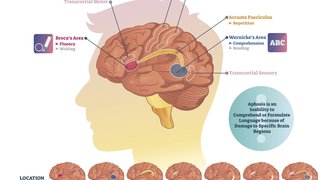
About one-third of people with epilepsy live with uncontrollable seizures because no available treatment works for them, according to the Epilepsy Foundation.
But a brand new epilepsy monitoring unit (EMU) open at Zale Lipshy Pavilion – William P. Clements Jr. University Hospital increases the ability of epilepsy specialists to diagnose and treat patients with difficult-to-control seizures. The unit is part of UTSW’s Peter O’Donnell Jr. Brain Institute.
“Our focus is to find the best treatment for a particular patient,” says epilepsy and sleep disorders specialist Ryan Hays, M.D., Assistant Professor of Neurology and Medical Director of the EMU. “If we can treat epilepsy with medication, that’s what we want to do; but if medications have been unsuccessful, a comprehensive evaluation in the EMU is necessary to determine the origin of the patient’s seizures.”
In order to treat seizures that are difficult or impossible to manage with medication, physicians need to closely study a patient’s unique seizure activity. “Seizures are unpredictable, but a variety of techniques can be used in the EMU to safely record the seizures under a physician’s supervision,” Dr. Hays notes. The new EMU is a safe place where physicians can analyze the patient’s electroencephalogram (EEG) to better understand the abnormal neural networks that lead to a patient’s seizures.
After studying the seizures, Dr. Hays and his colleagues can consider a variety of treatment options to better treat the patient and hopefully reduce the number of seizures.
Most patients are referred to the EMU from UT Southwestern’s epilepsy clinic, which offers comprehensive care for adult patients. The clinic has recently expanded to 10 epileptologists, making it one of the largest practices in the country.

Diagnosing epilepsy
The diagnosis of epilepsy is aided by electroencephalography (EEG), brain scans, and other imaging tools that help neurologists identify seizure-generating areas of the brain and target them with treatment.
If standard testing tools fail to find the seizure-causing area, neurologists can use a minimally invasive technique – stereo EEG – says Ghazala Perven, M.D., an Assistant Professor of Neurology who is a member of the epilepsy team at UTSW.
“A stereo EEG gives us a more complete picture of the brain’s activity than a standard EEG,” Dr. Perven says. “Instead of placing electrodes on the scalp, where skin, bone, muscle, and other tissue can get in the way, the electrodes in a stereo EEG are implanted in the brain itself.”
In a stereo EEG procedure, a neurosurgeon – using an advanced robot – creates a small hole in the skull through which stereotactic depth electrodes attached to a wire are passed. “Once the electrodes are in place in the brain, we measure the patient’s seizure activity over a week to two-week period in our epilepsy monitoring unit,” Dr. Perven says. “We then use the data to devise an epilepsy treatment plan.”
Request an Appointment
To schedule an evaluation with an epilepsy specialist, call 214-645-8300.










